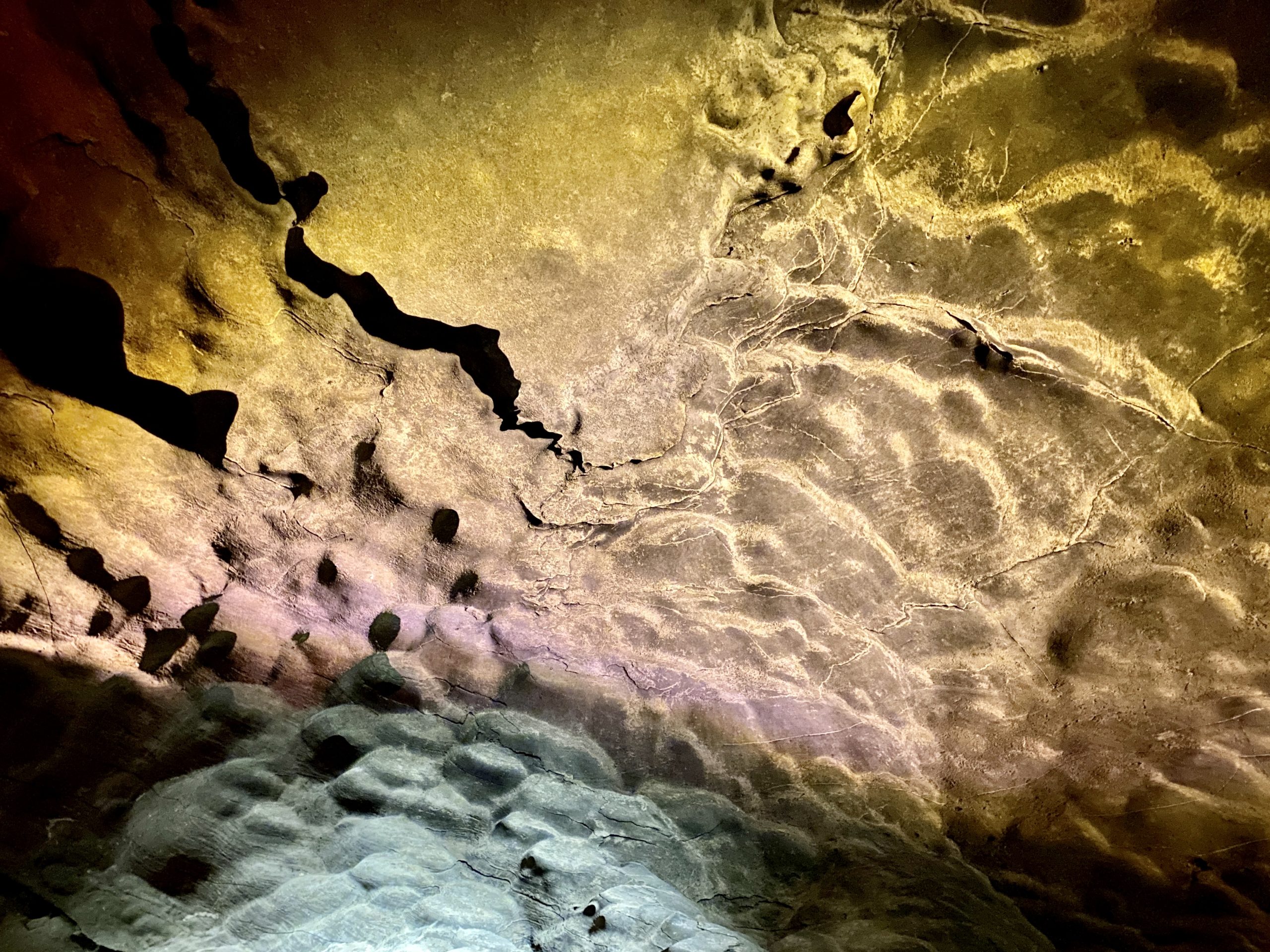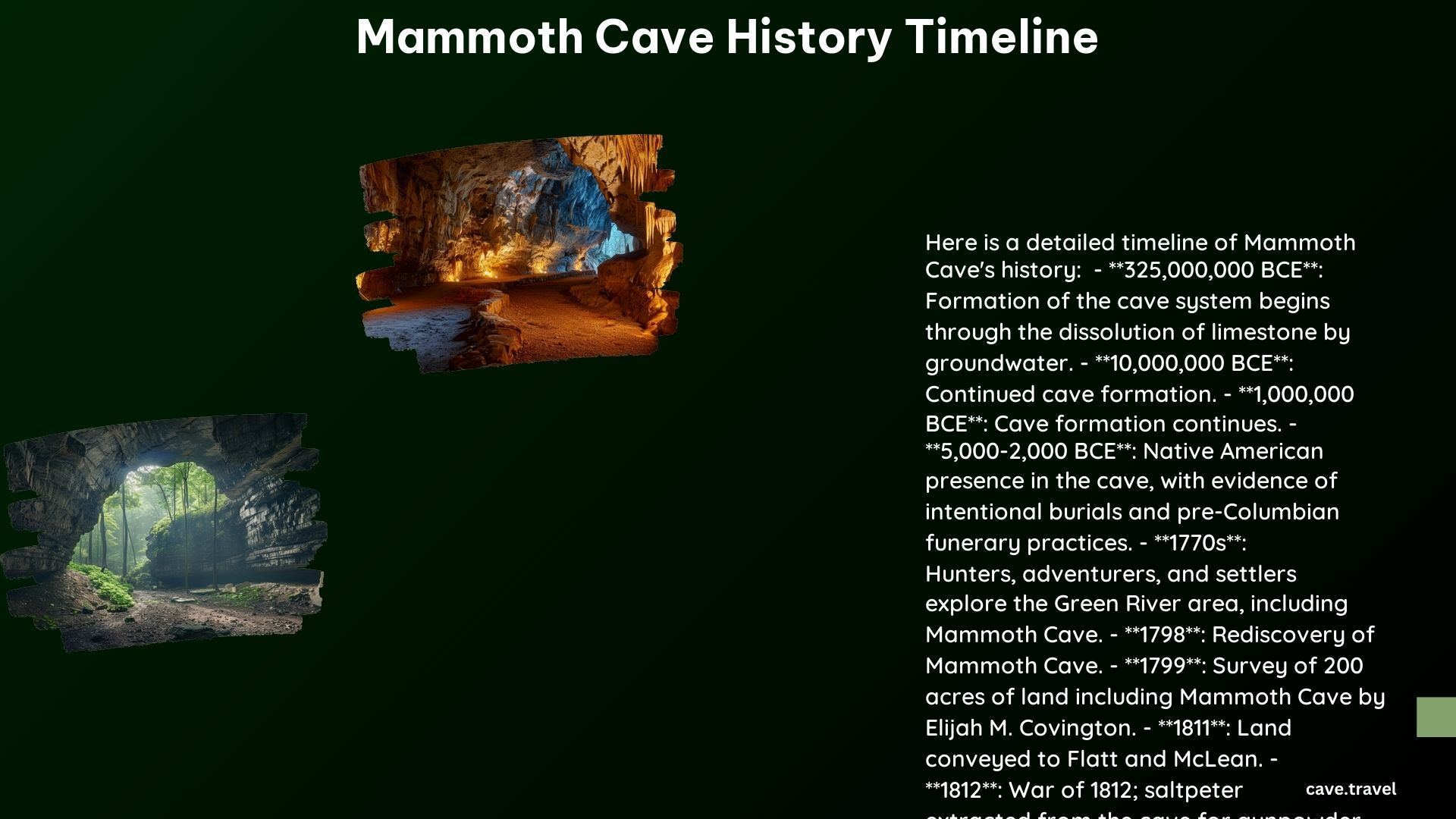Mammoth Cave, located in south-central Kentucky, is a natural wonder that has captivated the hearts and minds of explorers, researchers, and tourists for centuries. This comprehensive timeline delves into the rich history of Mammoth Cave, tracing its journey from prehistoric human activity to its modern-day status as a UNESCO World Heritage Site and International Biosphere Reserve.
Prehistoric Exploration (5,000 BCE – 2,000 BCE)

Mammoth Cave’s history dates back thousands of years, with evidence of human activity in the cave dating as far back as 5,000 BCE. During this time, Native American peoples explored and utilized the cave, collecting crystals, salts, and other resources. By 4,000 BCE, these prehistoric explorers had ventured at least 10 miles into the vast cave system.
Rediscovery and Early Exploration (1798 – 1812)

After a hiatus of nearly 2,000 years, Mammoth Cave was rediscovered in 1798. In 1799, a survey of 200 acres of land, including the cave, was conducted by Elijah M. Covington for Valentine Simons. In 1812, the cave became known as “Mammoth Cave,” and its saltpeter deposits were extracted for use in the War of 1812.
19th and 20th Centuries
Mammoth Cave’s journey as a tourist attraction began in 1816, predating the establishment of all national parks in the United States. In 1926, Mammoth Cave was authorized as a national park, and it was fully established in 1941, with only 40 miles of passageway mapped at the time.
During the 1950s, research by Patty Jo Watson shed light on the lives of late Archaic and early Woodland peoples who had explored the cave. In 1972, the Cave Research Foundation was formed, leading to significant discoveries and connections within the vast cave system.
In 1981, Mammoth Cave National Park was named a World Heritage Site, and in 1990, the park became the core area of an International Biosphere Reserve.
Modern Era
Today, Mammoth Cave continues to be an international treasure, with ongoing efforts to protect its natural systems and ecosystems. Visitors from around the world come to explore the depths of this natural wonder, marveling at its geological formations and the rich history that lies within.
Key Dates in Mammoth Cave History Timeline
| Year | Event |
|---|---|
| 5,000 BCE | Human activity in Mammoth Cave begins, with evidence of Native American remains and intentional burials found in the cave and nearby caves. |
| 4,000 BCE | Prehistoric peoples explore at least 10 miles of Mammoth Cave, collecting crystals and salts. |
| 1798 | Mammoth Cave is rediscovered after a 2,000-year hiatus in exploration. |
| 1799 | A survey of 200 acres of land, including the cave, is conducted by Elijah M. Covington for Valentine Simons. |
| 1812 | The cave becomes known as Mammoth Cave, and its saltpeter deposits are extracted for use in the War of 1812. |
| 1816 | Mammoth Cave becomes a tourist attraction, predating all national parks. |
| 1926 | Mammoth Cave is authorized as a national park. |
| 1941 | The park is fully established, with only 40 miles of passageway mapped at the time. |
| 1950s | Research by Patty Jo Watson illuminates the lives of late Archaic and early Woodland peoples who explored the cave. |
| 1972 | The Cave Research Foundation is formed, leading to significant discoveries and connections within the cave system. |
| 1981 | Mammoth Cave National Park is named a World Heritage Site. |
| 1990 | The park becomes the core area of an International Biosphere Reserve. |
| 2021 | The park continues to be an international treasure, with ongoing efforts to protect its natural systems and ecosystems. |
References
- https://www.nps.gov/maca/learn/historyculture/index.htm
- http://npshistory.com/brochures/maca/short-legal-history.pdf
- https://www.nps.gov/maca/learn/historyculture/timeline.htm
- https://en.wikipedia.org/wiki/Mammoth_Cave_National_Park
- https://npshistory.com/publications/maca/index.htm
